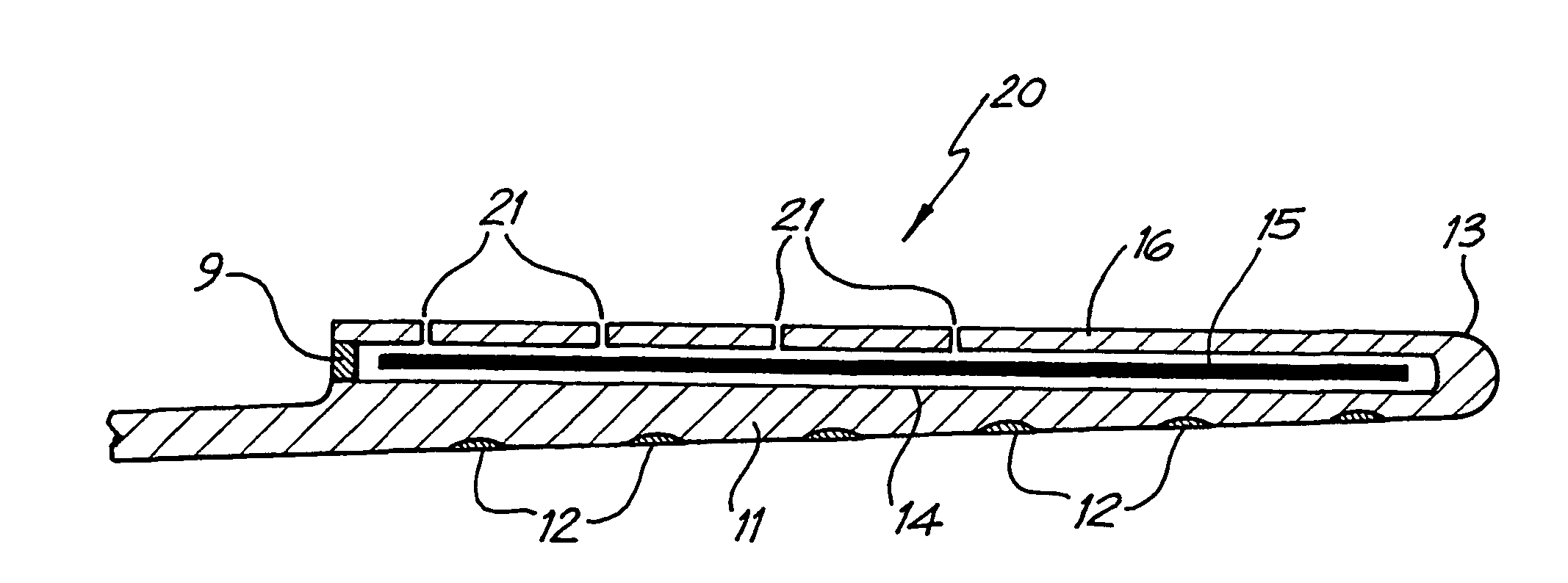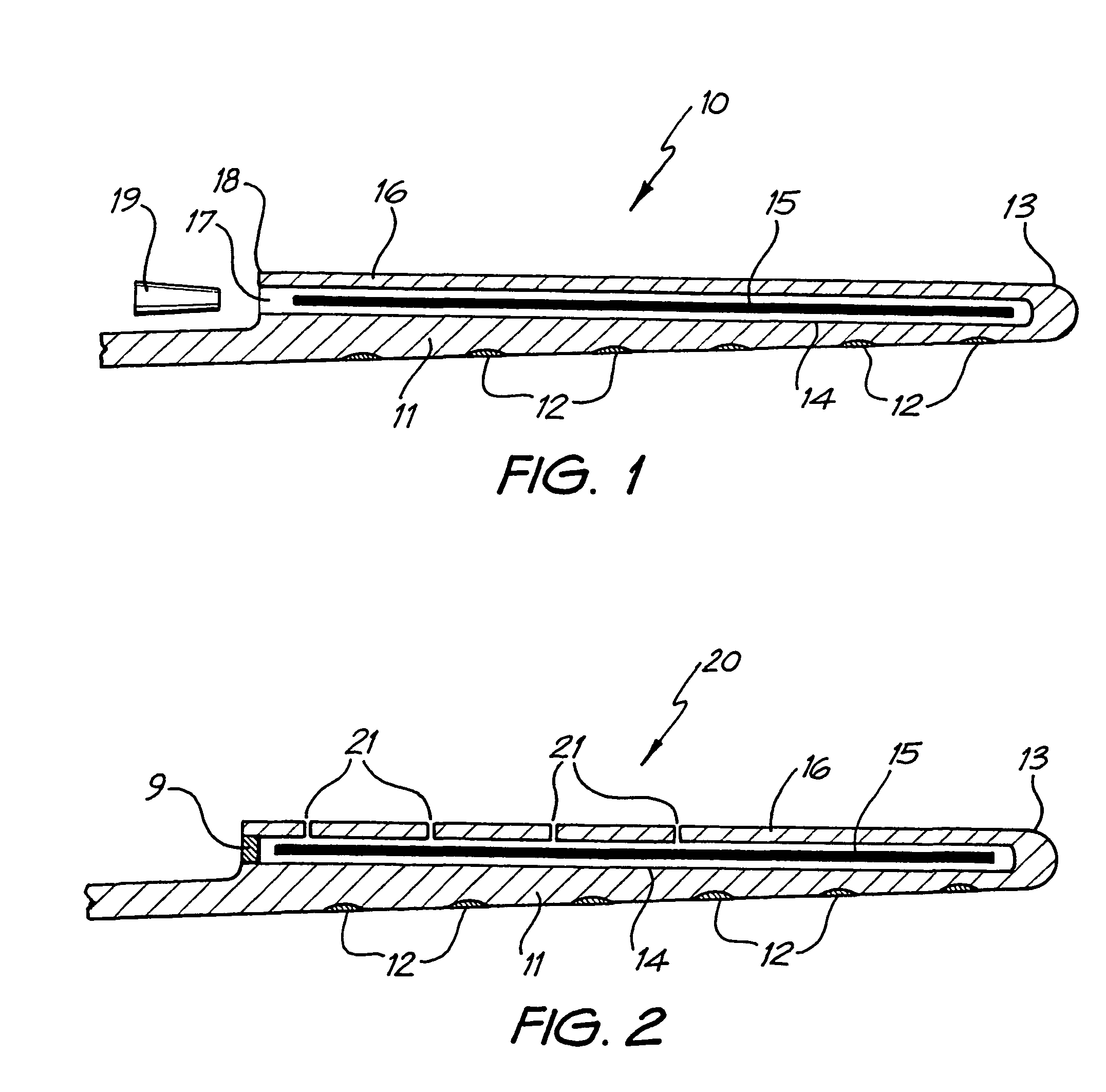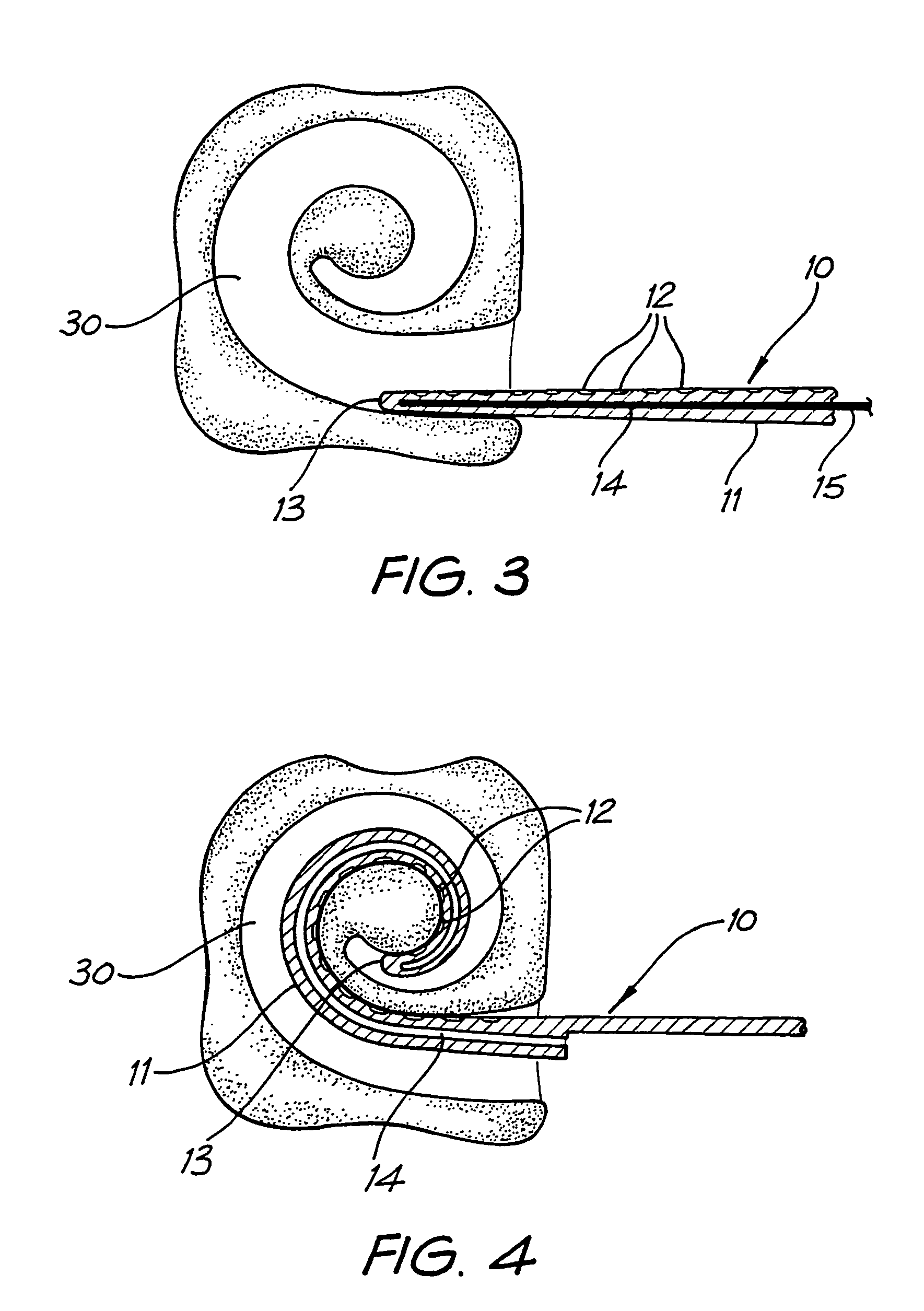Cochlear implant electrode array
- Summary
- Abstract
- Description
- Claims
- Application Information
AI Technical Summary
Benefits of technology
Problems solved by technology
Method used
Image
Examples
Embodiment Construction
[0088]One embodiment of a cochlear implant electrode assembly is depicted generally as 10 in FIGS. 1, 3 and 4.
[0089]The depicted electrode assembly 10 preferably has an electrical lead extending back to a stimulator / receiver housing. In considering this invention, it is to be understood that each electrode may have one or more wires (not depicted) electrically connected thereto and extending from each respective electrode back through the lead to the stimulator / receiver. The use of a stimulator / receiver as described herein is known in the art and the present invention can be used with any such stimulator / receiver as known in the art.
[0090]The assembly 10 comprises an elongate electrode carrier member 11 having a plurality of electrodes 12 mounted thereon. For the purposes of clarity, the electrodes 12 depicted in FIGS. 1, 2 and 5 are not necessarily shown to scale. The depicted elongate member 11 is preformed from a resiliently flexible silicone with memory and is preformed to a cur...
PUM
 Login to View More
Login to View More Abstract
Description
Claims
Application Information
 Login to View More
Login to View More - R&D
- Intellectual Property
- Life Sciences
- Materials
- Tech Scout
- Unparalleled Data Quality
- Higher Quality Content
- 60% Fewer Hallucinations
Browse by: Latest US Patents, China's latest patents, Technical Efficacy Thesaurus, Application Domain, Technology Topic, Popular Technical Reports.
© 2025 PatSnap. All rights reserved.Legal|Privacy policy|Modern Slavery Act Transparency Statement|Sitemap|About US| Contact US: help@patsnap.com



